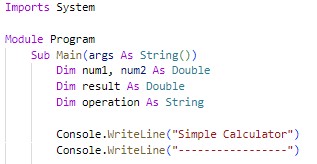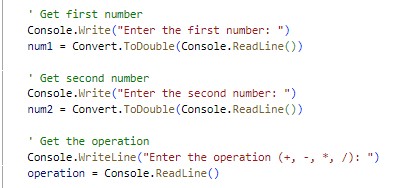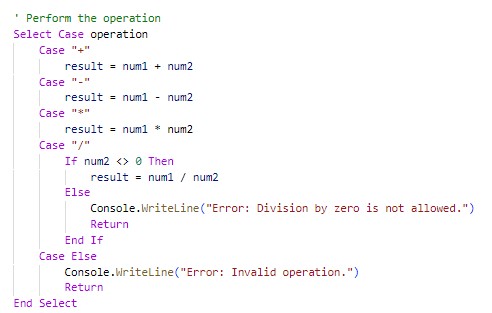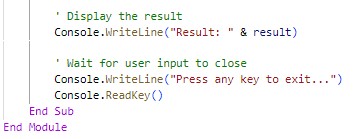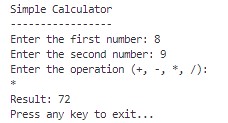Imports and Module Setup
The program begins by importing the `System` namespace, which provides fundamental classes and base classes that define commonly-used values and reference data types. Then, we define a `Module` containing the `Main` subroutine, which serves as the entry point of the program.
Input and Operation Handling
In the `Main` method, we prompt the user to input two numbers and an operation. The program captures this input using `Console.ReadLine()` and converts the input into appropriate data types.
The `Select Case` statement is used to handle different arithmetic operations (addition, subtraction, multiplication, division), with specific checks for errors like division by zero or invalid operations.
Error Handling
For the division operation, there’s an explicit check to prevent division by zero. Additionally, an error message is displayed for invalid operations that are not
supported (e.g., entering a symbol other than +, -, *, or /).
